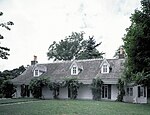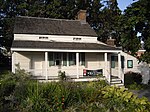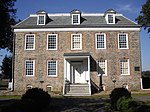|
Historic House TrustThe Historic House Trust of New York City was formed in 1989 as a public-private partnership with the New York City Department of Parks and Recreation[1] to preserve the historic houses located within New York City parks,[2] although most of the houses were not originally city-owned.[3] The Trust works with the individual houses to restore and promote the houses as a means of educating residents and visitors about the social, economic and political history of New York City and cast urban history in a new light.[4] The Trust includes 23 historic sites, with 18 operating as museums and attracting 729,000 annual visitors.[2] PropertiesThe Historic House Trust includes properties in each of New York City's five boroughs,[5] and there is a house for every period in the City's history, depending on one's scheme of dividing history.[4] A number of the properties have live-in caretakers to help prevent vandalism and other problems.[6] HistoryIn 1988, the City Parks department established a Historic House Office to preserve the 23 City-owned historic house-museums located in City parks. This office gave way to the Historic House Trust of New York City in 1989, funded by private donations,[9] as well as grants,[10] with the goal of each house becoming a professionally accredited museum.[11] In an effort to increase awareness of the program during its first year of operation, the Trust developed a so-called passport program wherein visitors would receive stamps each time they visited one of the houses. If a visitor went to all 23 properties, they would receive an audience with the Mayor.[12] HHT's passport program was brought back in 2008 as a method of commemorating the Trust's 20th anniversary.[13] The Trust also holds events such as the Historic Houses Festival, during which all the houses are open with different events at each, in order to raise awareness.[9] New properties are added to the Trust when they come under city control if private care-taking or ownership has not succeeded,[14] although the contents of the home may remain under private ownership.[15] References
External links |





















